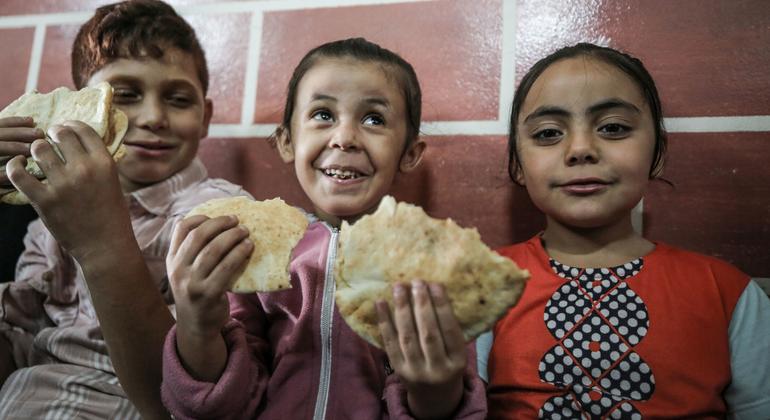Harmful disinformation about the ongoing conflict in the wake of the 7 October attacks by Hamas against Israel continues to circulate online, with potentially dangerous consequences on the ground.
While misinformation refers to the accidental spread of falsehoods, disinformation can be circulated intentionally by State or non-State actors, including during an armed conflict, to influence public or political opinion; it can affect all areas of development, from peace and security to humanitarian aid.
UN News looked at what’s happening online and how the UN is fighting for the truth.
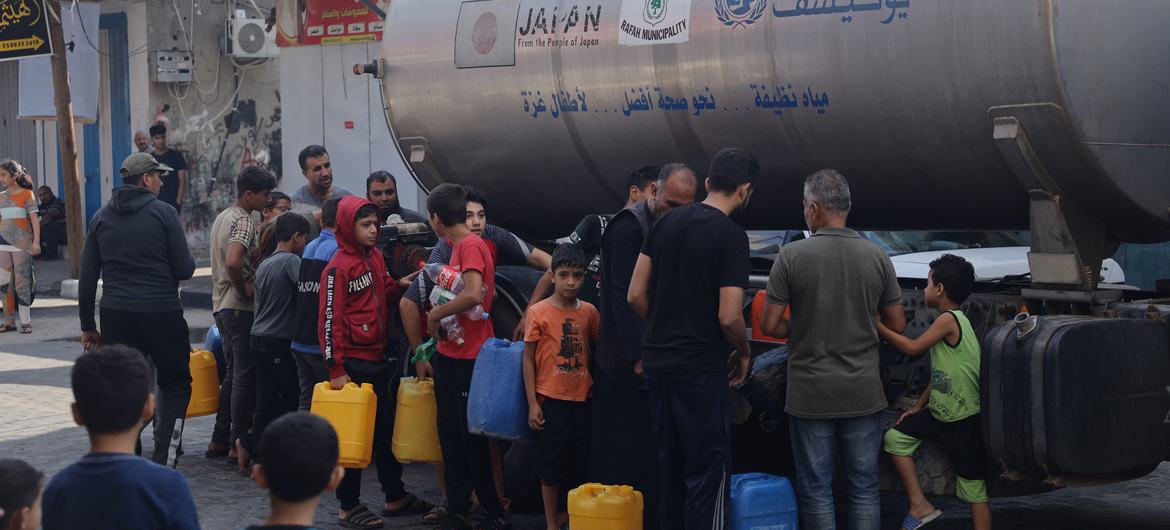
Drinking water is distributed to residents and displaced people in Rafah in the south of the Gaza Strip.
Fighting disinformation
With the world’s eyes on the border crossing into Gaza from Rafah, Egypt, last weekend, images of convoys carrying lifesaving aid flooded social media.
So did disinformation on what the trucks contained and how aid is reaching the 140 square mile besieged enclave that is home to 2.3 million people, 1.4 million of them displaced by ongoing hostilities.
To push back against disinformation and to promote what the United Nations calls “information integrity,” UN agencies are jumping in to provide the facts and correct harmful fake news, reaching out to media, and continuing to report on their digital platforms what is happening on the ground in Gaza.
Free wheat
Content circulating on social media platforms, has, erroneously claimed the UN is selling bags of wheat at exorbitant prices in Gaza.
In reality, the UN relief agency for Palestine refugees, UNRWA, continues to provide bread to the displaced across its shelters and has distributed free wheat flour to boost production at some 16 bakeries.
“To support displaced families and address the problem of bread shortages, UNRWA is supplying local bakeries with flour to give bread to families at a subsidized rate,” according to a situation report by the agency, which has served Palestine refugees since 1950 and is the UN’s largest supplier of humanitarian aid in Gaza.
The UN World Food Programme (WFP) has also delivered free bags of flour to around 23 bakeries serving its distribution points across the enclave, the agency’s head of communications, Alia Zaki, told UN News.
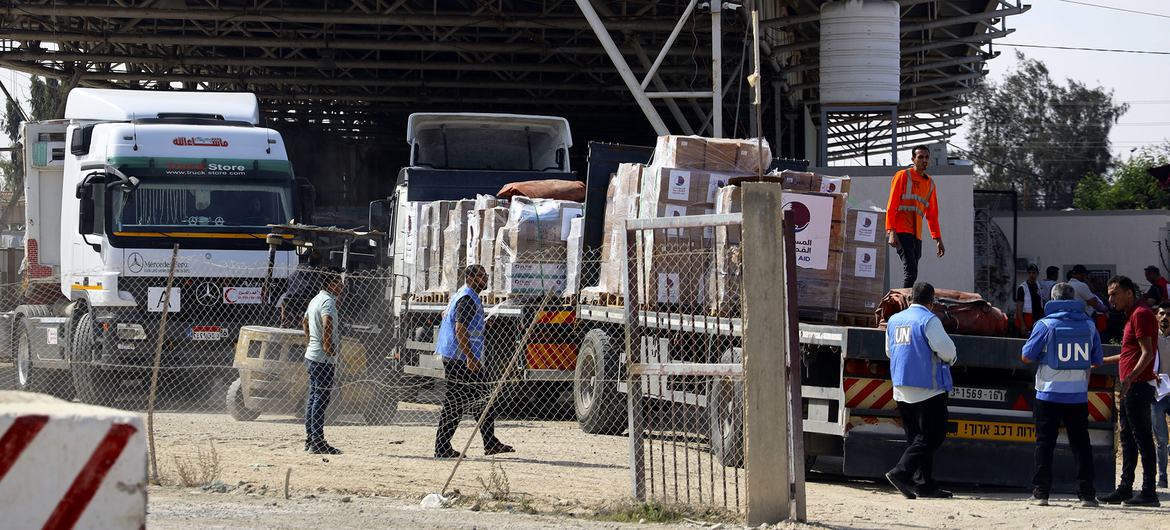
Aid convoys enter the Gaza Strip through the Rafah crossing border.
Food delivered to UN shelters
Since 7 October, most of the UN’s food distribution points and many of its shelters have closed due to bombardment and evacuation orders.
So, aid workers have been distributing recent shipments directly to 150 UNWRA facilities, sheltering more than 630,000 people seeking refuge from airstrikes.
Since the aid convoys arrived, the UN World Food Programme (WFP) has already reached half a million people with food, said agency chief Cindy McCain.
Free aid
Humanitarian aid is never sold.
“The United Nations does not charge a fee at any stage for humanitarian assistance,” stated a UN fraud alert published following a disinformation scam in Ukraine in 2022.
In Gaza, prior to the current conflict, at least 100 cross-border aid trucks arrived daily, according to UN agencies. The aid helped to serve 60 per cent of Gazans in need of assistance after Egypt and Israel imposed a blockade in 2007 when Hamas was elected to power.
Since 7 October, around 74 aid trucks have entered the enclave, Lynn Hastings, Humanitarian Coordinator for the Occupied Palestinian Territory said on Friday.
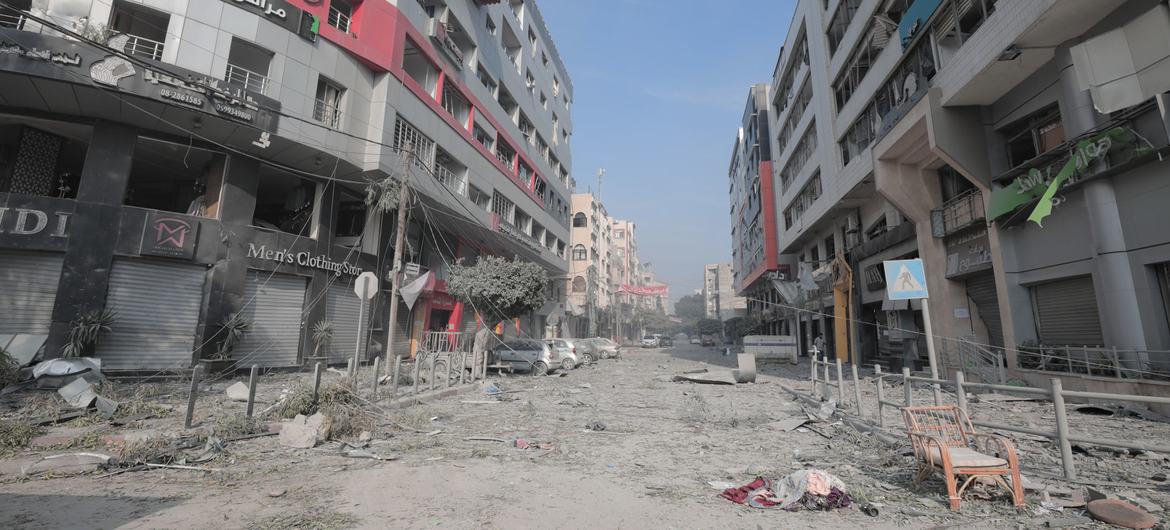
Commercial activity, including the sale of food, has all but ceased in many parts of Gaza.
Free food
The recent deliveries contained “essential supplies, food, medicine, and water,” Ms. Zaki of WFP told UN News.
Five of the 20 trucks in the first convoy contained food – three with food parcels and two with canned tuna, said the UN humanitarian coordination office, OCHA, in a situation report.
However, the limited supplies and fuel shortages have led WFP to reduce rations with a view to reaching as many people in need as possible, Ms. Zaki said.
Stopping fake news in its tracks
Studies show that lies travel many times faster than facts, said Melissa Fleming, UN Under Secretary-General for Global Communications, in a recent opinion piece.
“Once again, the fog of war is driving the spread of hate and lies online, resulting in dangerous errors with real-time, real-world consequences,” she wrote. “Related hate speech, mis- and disinformation – already rampant – is flooding social media feeds, warping perceptions, and risking further violence.”
How do you stop it? Ask UN agencies, which routinely use their social media platforms to update the public with the facts and dispel fake news.
Ms. Fleming recommends taking a step back from the news cycle. “First, be patient. We’ve all got used to round-the-clock updates. But such a polluted information environment just can’t support that. It’s time to adjust our expectations.”
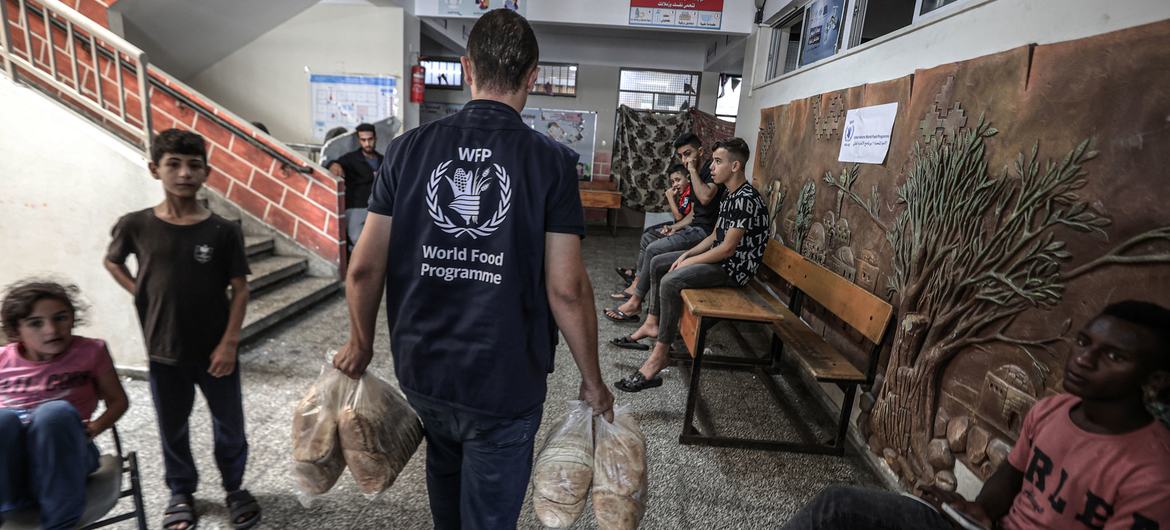
Bread is distributed at an UNRWA school in Gaza.
Setting the record straight
During times of conflict, confusion often reigns and facts can often be misinterpreted without any malice intended; the UN calls this misinformation rather than disinformation.
At these times, the UN underlines the importance of getting news from trusted sources while “urging platforms to ramp up efforts to enforce their own guardrails against the spread of harmful content,” according, to Ms. Fleming.
Two weeks into the conflict, social media and television news outlets, including an international broadcaster, claimed fuel tanks were moving into Gaza via the then shuttered Rafah crossing.
UNRWA’s communications director, Juliette Touma, set the record straight via a videoconference for the media at UN Headquarters in New York.
“If you can help us clarify so that we’re accurate; they were already inside Gaza,” she asked reporters, explaining that the video actually showed UNRWA trucks delivering much-needed fuel from its dwindling supplies. “So, right after this press conference, I’m going to pick up the phone,” said Ms Touma, intending to ask for a correction.
Read more here about how the UN is countering disinformation.

